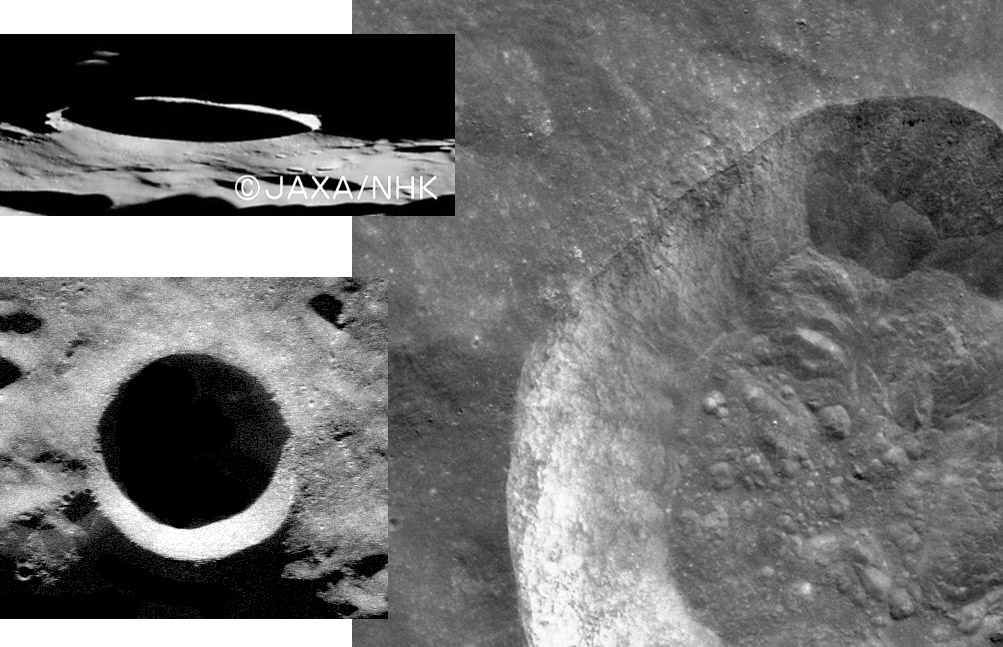LPOD Feb 3, 2008
"MUCH MORE RUGGED THAN PREVIOUSLY UNDERSTOOD"

Shackleton images from Kaguya (top left), Arecibo-Byrd radio telescopes (bottom left) and Apollo 17 (right) of Proclus
New 20 m resolution images of the lunar south pole have been obtained using the Goldstone Radar Telescope in California. The unreleased data depict peaks up to 6 km high and slopes of 25°-35° according to a story in Aviation Week. NASA had hoped to find a flat spot on the rim of Shackleton for a lunar base but now is concerned about the rugged terrain. NASA shouldn't be surprised. The little known, 19 km wide Shackleton - its always in shadow except for its rim as seen in Kaguya HDTV (top left) and terrestrial radar (bottom left) - has a sharp rim crest which should not give hope for a flat surface. Because we don't know what the interior of Shackleton looks like we can guess by using similar sized fresh craters. My favorite, partially because there are excellent Apollo Pan and Metric images, is Proclus (right). It is bigger, at 29 km in diameter, but still has the typical transition morphology of craters bigger than simple bowl-shaped craters but smaller than normal complex craters with terraces and central peaks. Characteristics of the transition craters are steep inner wall slopes and, for fresh craters, very narrow rim crests. Even if a landing could be made on the rim of Shackleton it would almost certainly be impossible to travel to the floor. So NASA has a problem. It wants a base on the rim to harvest continuous solar energy, but the reason to be at the pole is to search for water ice on the permanently shadowed crater floor! It will probably require separate landings both on the rim - or probably at the outer foot of it where terrain is less precipitous - and on the crater floor to explore for or mine ice. Perhaps a small rocket could carry the end of a long extension cord from the solar collector on the rim to the machines needing power on the floor below. Back to the analog craters. Proclus is not a good model for the topography of Shackleton because the bigger crater is only 1.9 km deep, probably being shallowed by its formation as an oblique impact. The 20 km wide Alfraganus is likely to be a better model for Shackleton's depth - it is 3.8 km deep - a long way down.
Chuck Wood
Technical Details
Proclus image is excerpted from AS17-150-23046 from LPI.
Title quote from Aviation Week.
Related Links
Rükl plates 73 and V
Index of past LPOD's
To post/view comments regarding this LPOD, please click here.